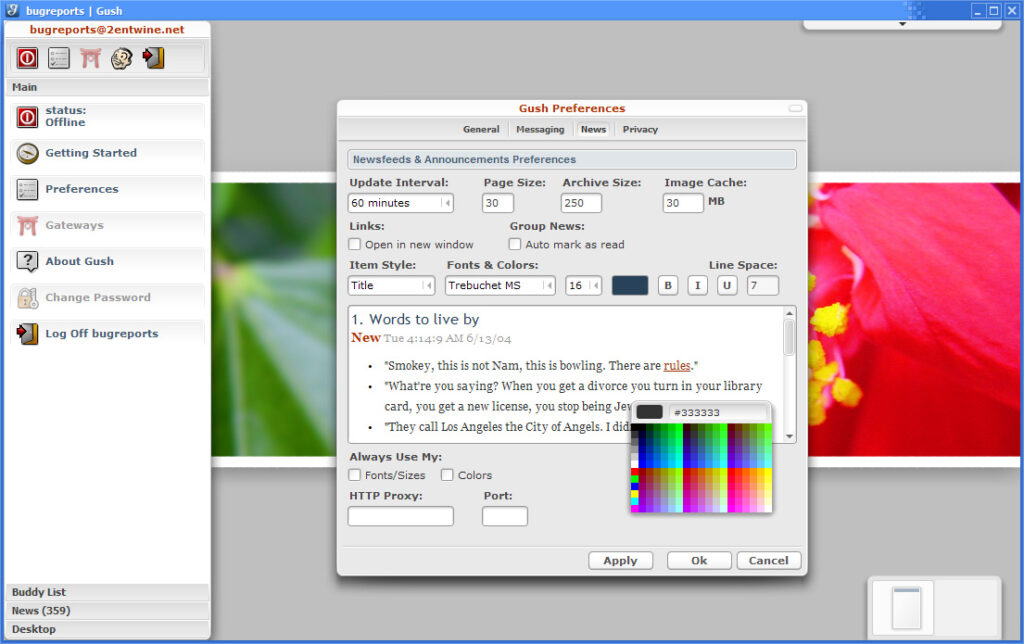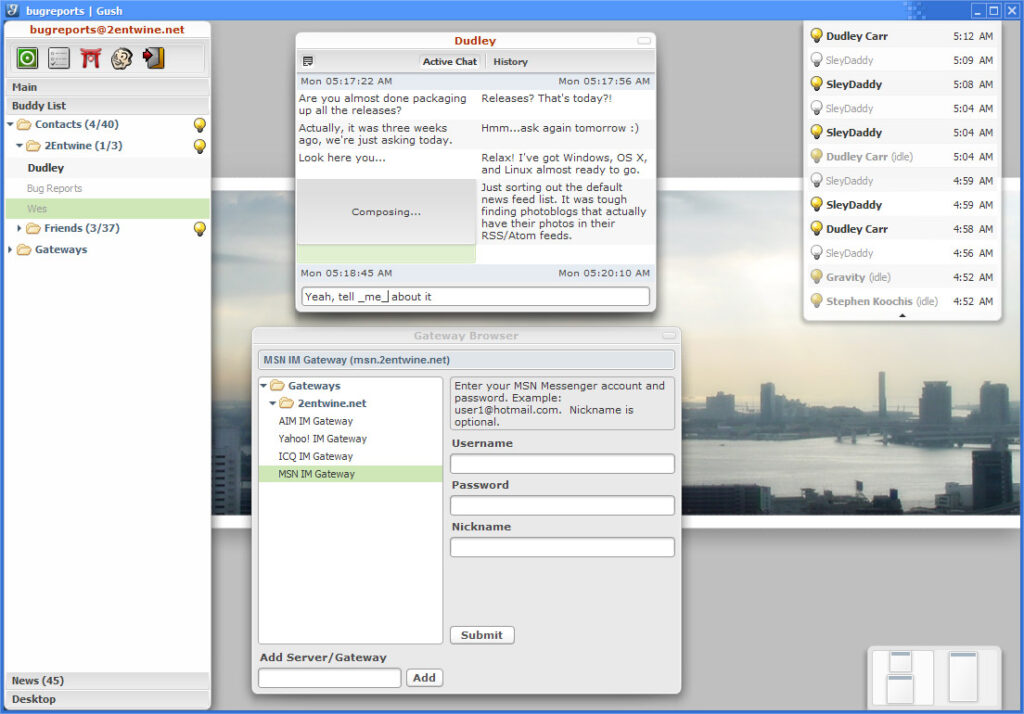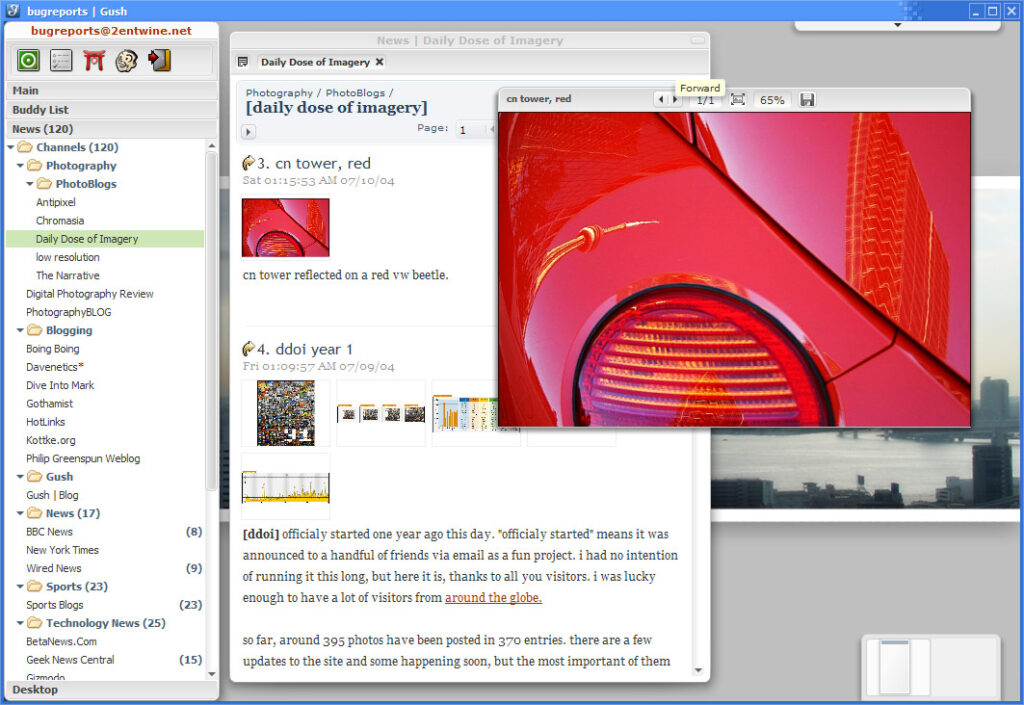Introducing Gush
Gush is a free, professional grade, cross-platform, instant messenger and newsreader contained in an aesthetically pleasing environment. Gush prides itself on being secure, full featured, and simple. Some people say its drop dead gorgeous but we’re a bit more modest. Download Gush and find out what you’ve been missing.



Thanks For Your Support
DASA Dubai
Business setup experts in UAE
If you ever want to get advise on the best way to setup your business in Dubai, or any zone in the UAE, DASA Consulting is the go to firm.
Xclusive Accessories
E-Commerce Store in Sri Lanka
Want the best prices on genuine accessories and appliances in Sri Lanka? Xclusive.lk has you covered.
Sunglass Sri Lanka
E-Commerce Store in Sri Lanka
If Sunglasses is your thing, visit our biggest supporter at sunglasssrilanka.com for the best prices on genuine Sunglasses collection for men and women in Sri Lanka.
Do You Recall the Days When Staying Updated with Current Events Meant Waiting for the Morning Newspaper or Catching the Evening News Broadcast?
Or how instant messaging was once a novel method to communicate online with friends? Since the 1990s, both our approach to consuming news and utilizing instant messaging (IM) have experienced tremendous transformation. The manner in which we acquire information and interact today is far removed from those earlier times. What initiated this shift, and how did we arrive at our present state? Let us thoroughly explore the evolution of news dissemination and messaging from their initial forms to today’s digital landscape.
News Consumption Patterns in the 1990s
In the 1990s, traditional media dominated news consumption. People typically turned to three primary formats:
- Newspapers: Most families subscribed to either daily or weekly editions of various newspapers. Print media held sway over public perception, as individuals ranging from professionals to students would commence their day by reading a paper in hand—be it a reputable source like The New York Times or a tabloid such as The Sun.
- Television: For breaking stories, individuals relied on televised broadcasts available during designated time slots provided by major networks such as CNN and BBC, along with local stations. This era marked the gradual emergence of a continuous news cycle; CNN’s extensive reporting on significant occurrences like the Gulf War in 1991 represented a pivotal moment.
- Radio: Many listeners received updates while commuting or working; radio stations typically delivered brief headlines that lacked the comprehensive depth found in print or television reports.
Accessing headline updates swiftly or searching for specific articles posed notable challenges during that period—missing out on reports at six o’clock meant one had no choice but to await coverage the following day.
Emergence of Early Instant Messaging Platforms: Transforming Online Interaction
Instant messaging revolutionized communication towards the close of the decade. Prior situations primarily involved email exchanges or participation in slow-moving online forums lacking an “instant” aspect until IM services emerged for real-time chatting among friends. Among the pioneering platforms were:
- ICQ (1996): Lauded as one of the first bona fide IM services permitting person-to-person chats through its clunky layout—but excitement flourished among users drawn by this innovative capability.
- AOL Instant Messenger (AIM) (1997): Introducing user-friendly interfaces complete with buddy lists and distinctive Away Messages became fundamental features contributing highly to AIM’s mainstream success.
- Yahoo! Messenger (1998): Yahoo enriched functionalities by incorporating unique avatar options alongside voice chat capabilities and file-sharing functions.
- MSN Messenger (1999): Microsoft made noteworthy strides into IM realms via an attractive platform recognized within early 2000s culture.
These platforms disrupted conventional communications—they negated telephone calls. Rather than awaiting email responses, users enjoyed instantaneous text interactions effortlessly achievable through typing prompts, yielding timely returns from recipients across all spheres they engaged within electronically—a thrill uniquely produced from seeing acquaintances come online, coupled with experiencing notification chimes that resonated delightfully, fondly remembered as part of generational nostalgia.
However, each service remained tethered squarely atop desktop systems, necessitating dial-up internet connectivity, which created restrictions hindering seamless participation unless one’s residence was properly equipped. This dependency required acute attentiveness, with conservative, circumspect dimensions provoking via formalities yielding grounded essentials, establishing rooted loyalties intertwined with a uniquely expressive relatability.
Transitioning News Consumption: A Shift Towards Digital Media
As developments surrounding internet speed advancements and accessibility proliferated, news consumption patterns altered immensely. By the early 2000s, conventional news outlets began to encounter competition from online news platforms. Readers no longer needed to await daily newspapers or television broadcasts; instead, they gained immediate access to information at any time through digital channels. Key developments during this period included:
- The Rise of News Websites: Prominent publications such as The New York Times, BBC, and CNN established online sites that provided articles readily accessible on demand.
- The Continuous News Cycle: Online publishing facilitated minute-by-minute updates rather than relying solely on daily print editions.
- RSS Feeds: These tools enabled users to compile the latest headlines from various sources in a single location.
As we transitioned into the late 2000s, social media networks like Facebook and Twitter evolved into primary sources for news consumption. Articles, videos, and updates spread rapidly across these platforms. However, this quick dissemination also sparked widespread concerns regarding fake news and misinformation.
The Shift from Desktop to Mobile Messaging
While initial instant messaging (IM) applications were groundbreaking in their time, they have since faded into obscurity, mainly due to the rise of mobile phones and social networking. Significant changes include:
- The Downfall of AIM, MSN Messenger, and Yahoo Messenger: As users transitioned towards smartphones over desktop computers in the 2010s, these traditional messaging services saw significant declines before ultimately being discontinued.
- The Emergence of Mobile Messaging Applications: Innovations such as WhatsApp (established in 2009), Facebook Messenger (launched in 2011), and WeChat (also debuted in 2011) surged ahead by enabling communication via smartphones—allowing discussions anytime and anywhere.
- End-to-End Encryption for Privacy Concerns: In response to rising privacy issues, many IM applications adopted encryption technologies aimed at safeguarding user conversations.
- Enhancements Beyond Text Messages: Contemporary instant messaging apps offer more than basic text interactions; users can exchange voice memos, conduct video calls, share emojis or stickers, and even make payments within chats.
Unlike earlier IM programs confined to one device type, modern apps provide seamless transitions across devices—phones, tablets, and desktops alike.
Social Media’s Influence on News Consumption and Messaging
A major transformative force in both information retrieval and IM has been social media itself. Networks like Facebook, Twitter, and Instagram serve dual purposes as vital means of communication as well as engines for disseminating information. The effects are seen through various attributes:
- News Aggregation Systems: Through tailored feeds based on user interests, social media sites effectively curate content.
- Real-time News Notifications: Audience members enjoy instantaneous alerts concerning breaking stories without needing the delay often associated with traditional television segments.
- Integrated Direct Messaging Systems: Features offered by platforms replace external chat rooms, shifting interactions toward private messaging integrated into larger social networks.
Nostalgic Memories
For individuals fondly reminiscing about AIM, Yahoo Messenger, and MSN Messenger, their simplicity and prolific nature remain nestled in memory, waiting to be recalled as immutable moments of the past. No distractions—just text chat, away messages, and the exhilaration of customizing your profile.
Apps these days are feature-packed—and often overwhelming. If you’re looking for simple messaging, you might also want to check out privacy-oriented and minimalist apps like Signal or Telegram.
While instant access to news is a major convenience, staying informed depends on credible sources. To avoid misinformation, consider subscribing to a digital newspaper or downloading a reputable news app to stay in the loop without unnecessary background noise.
